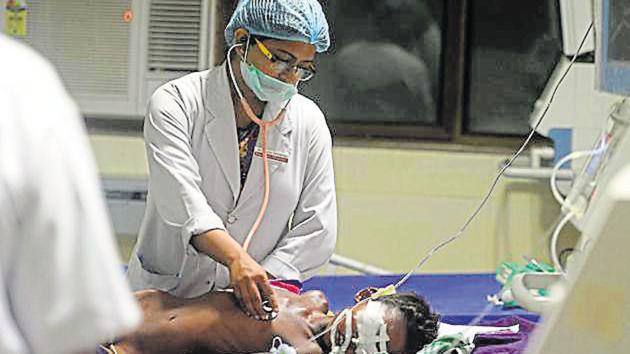India must focus on making universal health coverage a reality
India has to go a long way to achieve universal health coverage. Strengthening primacy healthcare and public financing of health will help in this direction
At the 2012 World Health Assembly, the then director general of the World Health Organization (WHO), Margaret Chan, declared that universal health coverage (UHC) is the most powerful concept that public health has to offer. A year later, Jim Kim, the World Bank president, said: “We must be the generation that delivers UHC.” In 2015, all nations assembled at the United Nations to adopt the Sustainable Development Goals (SDGs). A key target of the health goal is to achieve UHC for all by 2030. Last year, WHO director-general, Tedros Adhanom Ghebreyesus, listed UHC as his foremost priority. Keeping with that commitment, WHO chose the theme of this year’s World Health Day as ‘Universal Health Coverage: Everyone Everywhere’.

UHC is visualised as an ideal state of health system organisation in which every person gets quality health services as per her needs, without suffering financial hardship. While an overnight transformation of the health system is not possible, a planned and progressive evolution towards achievement of the SDG targets is imperative. UHC has been graphically depicted by WHO as a cube with three dimensions: population coverage; service coverage; and, cost coverage. While all of these need to be addressed in unison from the very start, the scale of each has to be periodically revised, as per resources available at that time.
The first (what proportion of the population is covered by the programme) is of greatest interest to political decision-makers, as they would like to please the largest number of voters. The second (what is the range of health services covered) is the priority of doctors, as they would like to make the maximum range of tests and treatments available to their patients. The third (how to reduce the financial burden of healthcare on individuals, while keeping the health budget within limits of fiscal prudence) is the concern of economists and finance ministers. There is a dynamic tension between these competing perspectives, even as the questions have to be answered in a complementary manner to progressively fill the UHC cube.
Universality invokes the principle of benefits to all through ‘horizontal equity’. However, the health gaps between the rich and poor also need to be bridged through ‘vertical equity’. This calls for a UHC which initially provides facilitated access to several essential benefits for all, with prioritised provision of additional benefits to poor and vulnerable sections. As UHC evolves, the programme must encompass the whole population with the largest band of common benefits.
At every stage, an ‘essential health package’ needs to be defined, listing the common services that will be provided to all, while supplementing these with additional services to the vulnerable sections. Disease burdens, cost-effectiveness and equity are factors that usually determine the services that are included. An extended cost-effectiveness analysis also factors in the amount of financial protection provided and the potential for poverty reduction by inclusion of any service in the package. This common package must expand as the health budget increases and evolve as the population profile of health challenges alters over time.
Primary care and emergency care must take priority, as must maternal and child health services. Without robust primary health services, preventable or easily treatable diseases will flood secondary and tertiary care facilities demanding expensive care for complications that should have been avoided. UHC will then tilt heavily towards advanced hospital care, disproportionately draining the health budget and leaving little impact on population health indicators.
Public financing of health is key to the success of UHC. Tax revenues and employer contributions must contribute to bulk of the funding for UHC, which must be capable of serving the whole population. This will create a large ‘risk pool’ where the healthy subsidise the sick and the rich subsidise the poor. A ‘single payer’ system will be best positioned to regulate cost and quality while dealing with the mix of public and private healthcare providers who the government wishes to engage for strategic purchase of healthcare services.
India is still far from the UHC target. Government-funded insurance programmes targeting the poor have increased their access to hospitalised care but have failed to provide financial protection. High, out-of-pocket expenditure on outpatient care and medicines, uncovered by these schemes, are the reason, apart from add-on hospitalisation costs. Primary care too has been weak in many parts of the country.
The centrally-sponsored Ayushman Bharat - National Health Protection Mission aims to galvanise frontline primary care and scale up the financial coverage of hospitalised care for the poor. While this is welcome, the whole chain of health services must be strengthened, especially the weak links in primary care and district hospitals. Health workforce shortages must be addressed, so that promised entitlements are actually delivered. The health budgets must rise substantially, at both state and central level, if the sluggish journey towards the SDG target is to speed up. More than to the UN or WHO, India must keep the promise to its people.
Srinath Reddy is president, Public Health Foundation of India
The views expressed are personal






